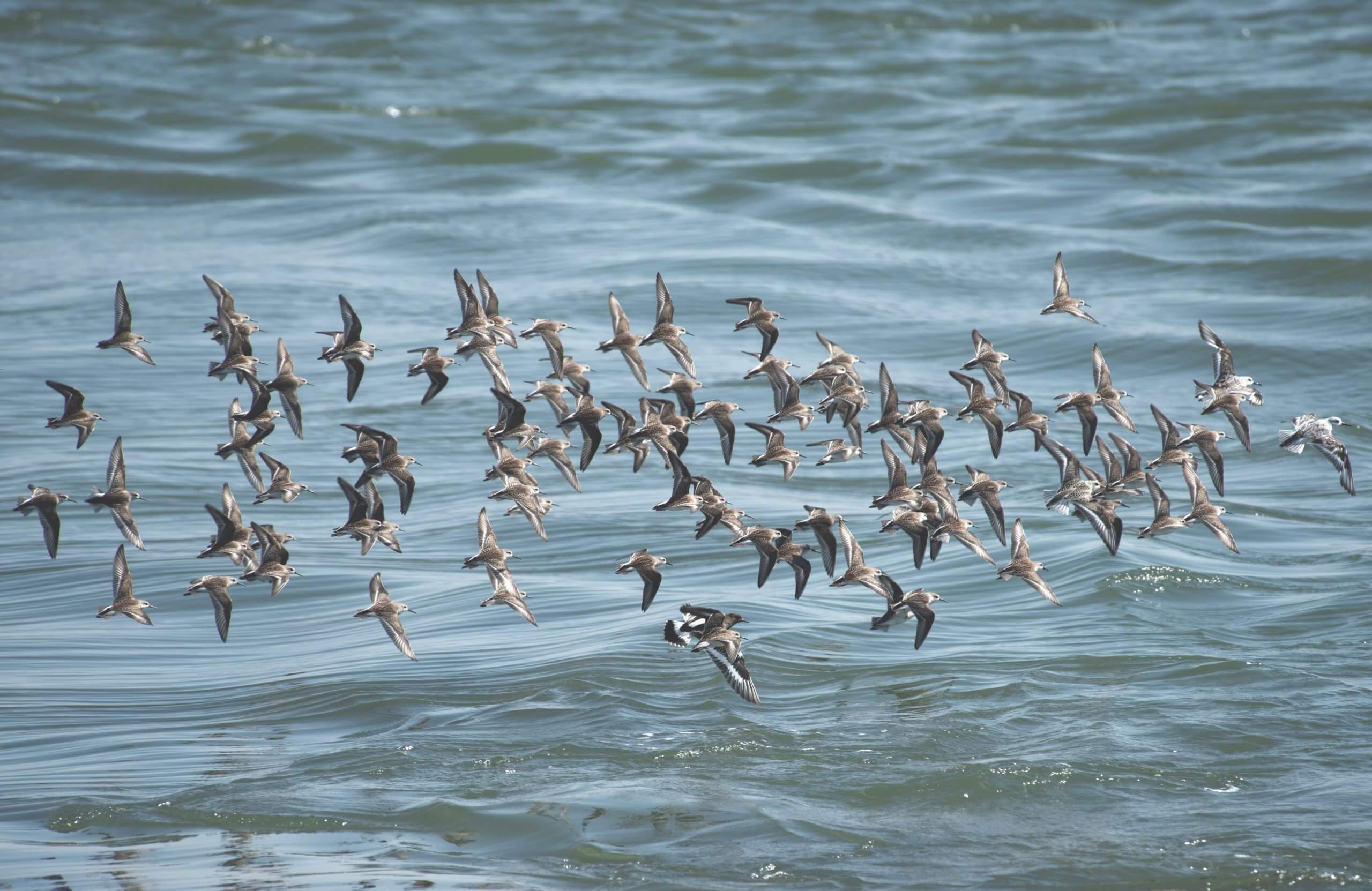By Brooke Smith
Published January 22, 2014
Title: Building A Metro For Science Communication
Categories: Leadership, Reflection
Tags: Brooke Smith, culture, evaluating, funding, goals, graduate school, more resources, training, workshops
“Doors Closing. Please stand clear of the doors.” For anyone who lives, or has spent time in Washington, D.C., you recognize this as the announcement just before the Metro pulls away from the station. The Metro is one of the things I miss most about living in Washington, D.C. Even in a commuter-friendly place like Portland (which I now call home), the bike lanes and MAX simply can’t move as many people to as many destinations with the efficiency of the Metro. The Metro provides something critical to a buzzing, busy city – people-moving infrastructure.
The DC metro moves 100,000’s of people a day. How many more scientists could engage with a science communication infrastructure? Photo courtesty of M G M via Flickr.
Infrastructure has been on my mind. The National Academy of Sciences’ Public Interfaces of Life Science Roundtable just completed our second day of workshops on the Sustainable Infrastructures of Life Science Communication. Our charge was to explore the infrastructure needed to support scientists engaging with the public, including exploring what gets in their way of successfully engaging. The details of our discussion were fascinating, inspiring, and sometimes frightening. For a deep dive into our conversations, check out this summary, videos (here and here), and these Storifies (here and here). Here, I take big step back, and look across our whole science communication infrastructure.
Our workshop opened with inspirational remarks from life scientists May Berenbaum, Nalini Nadkarni, Daniel Colon-Ramos and Craig McLain. These scientists, like many of you, have found a way to engage, even without the infrastructure that makes it easier. What if we had a functional infrastructure for science communication and engagement? How many more scientists could it move? How much easier would it be for those of you already engaging? It could be the difference between a city with a metro and a city without one.
It takes a complex network, structural system and multiple efforts to ensure the Metro can move people to multiple destinations every day (there are about 800,000 trips taken daily on the Metro). Infrastructures require not just ‘hard structures’ (physical networks), but also ‘soft structures’ (institutions and cultures). Here’s what it takes to build a robust infrastructure, and how I think we’re doing with regards to building one for science communication:
DESTINATIONS | The Metro has many clear stops, stations, or destinations.
When it comes to engagement, where are scientists trying to go? What are their destinations? There are a myriad of reasons why scientists engage. However, our workshops revealed that we are not sufficiently articulating all these engagement goals. And if we don’t know the destinations, we won’t know how to get there or if we’ve arrived. We heard broad goals like improve scientific literacy, have people know science is cool, or how science improves our lives. Others articulated more specific goals like conservation or healthier people. Dr. Dan Sarewitz rightfully challenged us on this point: the bottom line is that we need to be much clearer in defining why we communicate.
PATHWAYS | The Metro has multiple different lines to support people moving to different destinations.
The practice of science communication is a growing field. Pathways for scientists to help them engage include things like communication trainings (like COMPASS, the Leopold Leadership Program or NSF’s Becoming the Messenger), support from boundaries organizations (like COMPASS), efforts that bring scientists to classrooms (like GK-12) or to local communities (like DC Science Café or NAS’ Science Ambassadors). All of these are needed. And often you’ll need to take multiple trains to get to a single destination, and sometimes you’ll take different trains as your destination changes. Can we leverage each other’s efforts, knit our system together, and avoid re-inventing pathways others have invented (or at least learn from each other)?
ORGANIZATIONS | The Washington Transit Authority is the lead Metro authority. Many other institutions are involved (e.g., Metropolitan (D.C.) Police Department, Fairfax County, State of Maryland).
Multiple organizations play a role in scientist engagement, including universities, industry, NGOs, government agencies, funding agencies, boundary organizations, the National Academies, and scientific societies. We don’t lack for organizations that are contributing and wanting to contribute more. But, what we do lack is a science communication “transit authority” – a thoughtfully guided central entity, or community of practice, to help us share our successes and failures, leverage our impacts, and keep from re-inventing the wheel.
POLICIES | Rules (e.g., No food or drink on the metro).
Science communication policies are broken or non-existent in most (but, not all) places. Academia’s promotion and tenure system needs to start incentivizing engagement. Graduate STEM education should teach and prioritize communication (#Gradscicomm is trying to change this). Government agencies need to find ways to support federal scientists to engage more freely. While some are trying to do this, like NOAA with its scientific integrity policy, Kathyrn Foxhall shared a broader, sobering perspective on restrictions and censorship of federal employees. We do not yet have consistent policies that support science communication.
CULTURE | The escalator culture in Metro stations of “stand on the right, walk on the left” is strong. It helps reduce congestion and move people faster.
Scientific culture runs deep, and has largely created a culture steeped in credibility, inquisitiveness, and accountability. But, the byproducts of this culture are antithetical to communication. It is focused on data not people, being right before being open, an avoidance of talking about yourself (i.e., not letting yourself be a character in the story), and tenure being a precursor to speaking up. Some great efforts are underway to change these cultural norms. For example, “This is what a scientist looks like” or scientists supporting one another through the #reachingoutsci hashtag. Be the change you want to see, and the culture can change.
RESEARCH | Building the Metro required elaborate engineering, geophysical, social, and economic data, tools, and research.
The growing field of the science of science communication offers us critical insights. NAS’ Sackler Colloquium on the topic is beginning to be a hub for this information, appropriately noting that given the weight of evidence scientists rely on for their research, they should not rely on hunches when it comes to communicating their research. The practitioners and researchers of science communication must be better connected. Practitioner Rick Borchelt and researcher Bruce Lewenstein did a great recap of what we know about science communication from their perspectives during our workshop. These types of collaborations are beginning to form, but more of them need to happen. We must build our practices and infrastructure based on what we know, observe and learn, rather than just on what we suspect to be true.
BUILDING | The Metro had to be built. People built it. We invested in the building.
We have been building a science communication infrastructure, but it’s happening piecemeal. It’s time to get serious about better defining and describing the above characteristics of a sustainable infrastructure, so we can build smarter and build more efficiently. Funding an infrastructure won’t be easy (we had a stellar panel of funding experts discuss this). But we won’t invest in building the infrastructure without carefully laid out and informed destinations, pathways, policies, cultures, and research.
Fast-forwarding 40 years, this planet will support nine billion people. Every one of those people will need food, water, and energy and will want to live healthy, long lives. We rely on science and technology to survive and to improve our lives. Yet, our knowledge is changing so fast that the public is often unaware of potential benefits and consequences. If scientists can’t communicate effectively and powerfully, and find their way to the relevant audiences, they will not be at the tables where discussions are happening and decisions are being made. With a better infrastructure for science communication, we can support exponentially more scientists to engage and communicate with the wider world. The stakes feel too high not to do this. Where will you start helping to build our infrastructure?
Brooke Smith was Executive Director at COMPASS from 2004-2016. This post was transferred from its original location at www.compassonline.org to www.COMPASSscicomm.org in 2017.



